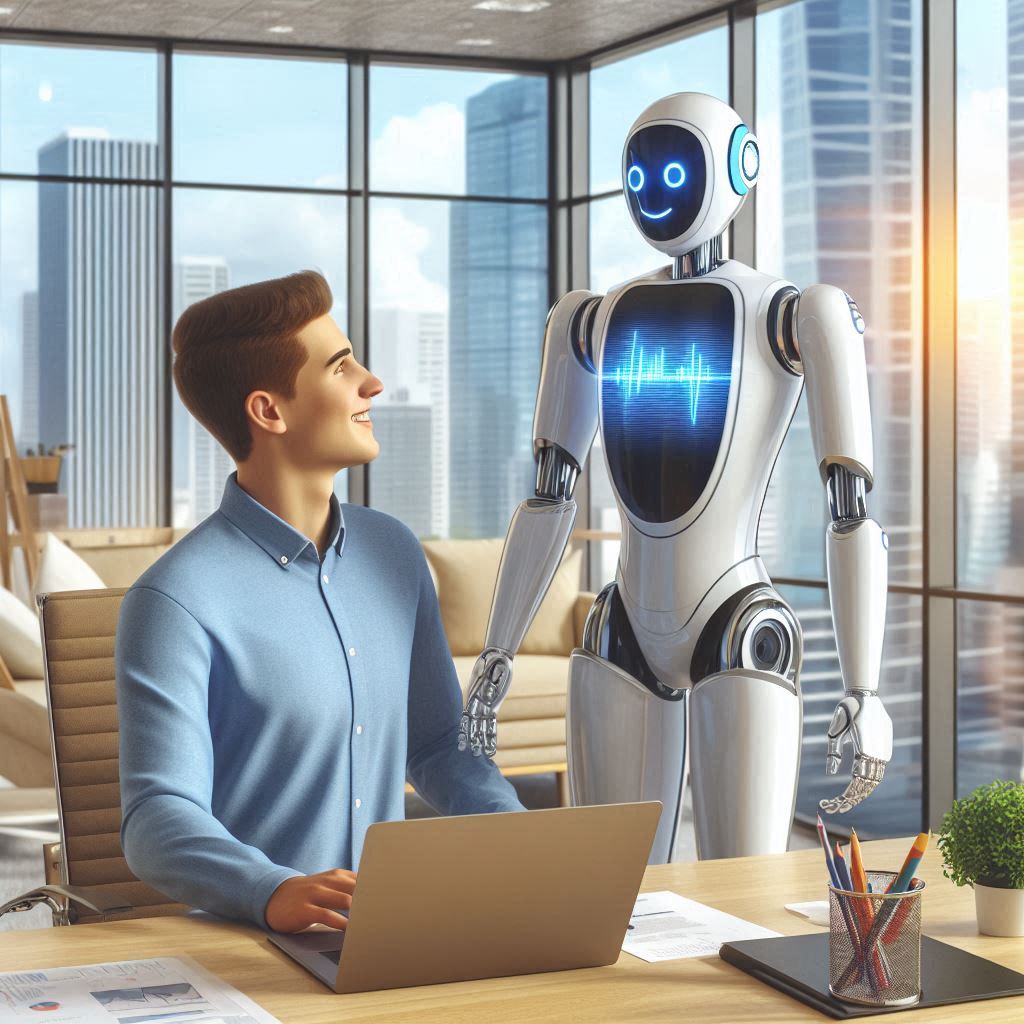Chatbot Python is a conversational agent built using the Python programming language, designed to interact with users through text or speech. These chatbots can be programmed to perform various tasks, from answering questions to providing customer support or even simulating human conversation.
Creating a sophisticated chatbot with Python requires a solid understanding of natural language processing techniques and machine learning algorithms.
Devoner, a premier software development company, specializes in chatbot Python development, offering innovative tools and services to enhance customer interaction and streamline business operations for startups and established companies alike.
This article will explore the steps to building your chatbot, covering essential steps and considerations. By the end, you’ll clearly understand how to leverage Python to create functional and practical chatbots that can enhance various aspects of business operations.
Let’s dive in!
How to Build a Chatbot Python
Building a chatbot with Python requires a deep understanding of natural language processing and machine learning algorithms to create intelligent conversational interfaces. Choosing the correct chatterbot library and framework is also crucial for effective development. Here’s how to build a chatbot with Python that engages users and enhances business operations.
Step 1: Preparing the Dependencies
Before developing a chatbot with Python, meticulously prepare the essential dependencies. This involves installing requisite libraries and importing crucial modules to lay the foundation for the development process.
Python offers extensive specialized libraries and frameworks designed explicitly for chatbot development, such as NLTK, spaCy, and Rasa. These libraries provide developers with many functionalities spanning natural language processing, machine learning, and conversational logic, empowering them to create robust and intelligent chatbot solutions.
Tools like Pip, the Python package manager, facilitate the seamless installation of dependencies and efficient project requirements management. By ensuring all necessary dependencies are in place, developers can confidently embark on subsequent stages to create a chatbot.
Step 2: Choose a Type of Chatbot to Develop
Selecting the appropriate type of chatbot is a critical decision that significantly influences its functionality, performance, and overall success. Different types of chatbots offer unique advantages and capabilities, so it’s essential to evaluate each option based on different factors.
Types of chatbots to consider:
- Rule-based Chatbots: Operate on predefined rules and patterns to generate responses based on specific keywords or commands. Ideal for handling simple interactions and can be easily implemented with minimal complexity.
- AI-powered Chatbots: Utilize deep learning techniques and advanced machine learning algorithms to analyze and understand natural language input, enabling them to generate contextually relevant and personalized responses. These chatbots excel in handling complex conversations and can continually enhance their performance through training data.
- Hybrid Chatbots: Combine elements of both rule-based and AI-powered approaches, offering flexibility and adaptability while maintaining control over specific interactions.
- Retrieval-based Chatbots: Retrieve predefined responses from a database based on user input, making them suitable for handling structured inquiries. While they cannot generate novel responses, they provide accurate and consistent answers to frequently asked questions.
By carefully considering the type of chatbot to develop, you can align your project goals with the most suitable approach to achieve optimal results. Understanding the strengths and limitations of each type is essential for building a chatbot that effectively meets your objectives and engages users.
Step 3: Creating and Naming Your Chatbot
Creating and naming your chatbot is an exciting step, as it gives your bot its unique identity and personality. Consider factors such as your target audience, the tone and style of communication you want your chatbot to adopt, and the overall user experience you aim to deliver.
A well-chosen name can enhance user engagement and make your chatbot more memorable and relatable. Avoid generic or overly technical names and opt for something catchy, memorable, and aligned with your brand personality. Consistency in naming helps reinforce your brand identity and ensures a seamless user experience.
Once you’ve selected the perfect name for your chatbot, you’re ready to proceed with the subsequent development steps, confident in the unique identity and personality you’ve bestowed upon your creation.
Step 4: Gathering and Preparing Data
In developing a chatbot, thorough data gathering and preparation are essential to ensure its effectiveness. By carefully collecting and preprocessing relevant datasets, developers lay the groundwork for the chatbot to understand user inquiries and generate accurate responses.
How to gather and prepare data:
- Collect Relevant Datasets: Methodically gather data from diverse sources, including FAQs, support transcripts, and conversational datasets. Ensure alignment with your chatbot’s scope and user queries for comprehensive data acquisition.
- Label and Annotate Data: Implement a meticulous organization system, labeling, and annotating collected data into distinct categories or topics. This structured approach facilitates the chatbot’s training process.
- Clean and Preprocess Data: Conduct thorough data refinement procedures to enhance dataset quality. This involves removing extraneous noise, addressing formatting inconsistencies, and eliminating duplicate entries.
- Augment Data If Necessary: Strategically augment the dataset size by integrating synthetic data using advanced techniques such as data augmentation or leveraging pre-trained language models.
By following best practices in data collection, labeling, preprocessing, and augmentation, you can ensure that your chatbot is equipped with the necessary information to provide accurate and relevant responses, enhancing the overall user experience.
Step 5: Training and Testing Your Chatbot
Training and testing your chatbot is a pivotal phase in the development process, where you fine-tune its capabilities and ensure its effectiveness in real-world scenarios. Begin by training your chatbot using the gathered datasets, employing supervised learning or reinforcement learning techniques to optimize its conversational skills.
Once trained, it’s essential to thoroughly test your chatbot across various scenarios and user inputs to identify any weaknesses or areas for improvement. During testing, simulate diverse user interactions to evaluate the chatbot’s responses and gauge its performance metrics, such as accuracy, response time, and user satisfaction.
By rigorously training and testing your chatbot, you ensure that it meets the desired performance standards and delivers a seamless conversational experience for users across various platforms and communication channels.
Step 6: Integrating Your Chatbot into Your Website
Integrating your chatbot into your website is a crucial step that enables seamless user interaction and enhances the overall user experience. Visitors to your website can access assistance and information conveniently, fostering engagement and satisfaction.
Key points to consider:
- Choose the Proper Integration Method: Determine whether you’ll integrate your chatbot using a pre-built plugin, custom API integration, or a platform with built-in web integration capabilities.
- Design a User-friendly Interface: Create a visually appealing and intuitive interface for your chatbot that seamlessly blends with your website’s design and enhances the overall user experience.
- Ensure Cross-browser Compatibility: Test your chatbot across different web browsers and devices to ensure consistent user performance and functionality.
- Implement Proactive Engagement: Consider implementing proactive engagement features such as chat triggers or pop-up messages to initiate conversations with website visitors and enhance user engagement.
Integrating your chatbot into your website is essential for providing users convenient access to assistance and information while enhancing overall user engagement and satisfaction. By considering key integration points and ensuring a seamless user experience, you can effectively leverage your chatbot to drive meaningful interactions and achieve your website’s objectives.
Step 7: Complete Project Code
Completing the project code is the last stage in your journey of building a chatbot with Python, where meticulous organization, comprehensive documentation, and rigorous testing converge to ensure a robust and functional application. This phase involves packaging your code into a deployable format and implementing essential security measures to safeguard sensitive user data and comply with privacy regulations.
With continuous monitoring and iterative improvements post-deployment, you can optimize your chatbot’s performance and enhance its user experience. By focusing on these crucial aspects, you bring your chatbot Python project to fruition, ready to deliver valuable assistance and engagement to users in diverse real-world scenarios.
Features of a Chatbot Built with Python
Exploring the capabilities and functionalities of chatbot Python provides valuable insights into their versatility and effectiveness in various applications. Here are the key features and attributes that make chatbot Python stand out in delivering seamless and engaging user experiences.
Admin Side Features:
- User Management: Create, edit, or delete user profiles and control access levels, ensuring secure user management within the chatbot system.
- Content Management: Easily update responses, FAQs, and other content elements to ensure accurate and up-to-date information is provided to users.
- Analytics and Reporting: Gain valuable insights into chatbot usage, user engagement, and conversation completion rates, facilitating data-driven decisions.
- Integration with CRM Systems: Seamless integration with CRM systems enables synchronization of chatbot interactions with customer data.
- Customization and Branding: Configure colors, logos, greetings, and language styles to create a unique brand identity.
- Security and Compliance: Robust security features, including authentication mechanisms, encryption protocols, and access controls, protect user data.
User Side Features:
- Personalized Recommendations: Users receive tailored suggestions and recommendations based on their preferences and previous interactions.
- Multi-Channel Accessibility: Users can interact with the chatbot seamlessly across various channels, including websites, mobile apps, and messaging platforms.
- Natural Language Understanding: The chatbot accurately interprets user inputs and responds in natural language.
- Interactive Conversations: Users engage in interactive conversations, enabling them to ask questions, provide feedback, and receive real-time responses.
- 24/7 Availability: The chatbot is available round-the-clock, allowing users to access assistance and information anytime.
- Contextual Awareness: The chatbot maintains context throughout conversations, remembering previous interactions to provide relevant responses.
Common Challenges Developers Face + Solutions
Navigating the landscape of chatbot Python development presents numerous challenges that developers must overcome for successful implementation. Here are the challenges developers often encounter and practical solutions to ensure smooth progression in their chatbot projects.
Performance Optimization: Optimizing chatbot performance to handle high volumes of concurrent users while maintaining responsiveness can be daunting. Solutions involve leveraging scalable cloud infrastructure, optimizing algorithms for efficiency, and implementing caching mechanisms.
Integration Complexity: Integrating chatbot Python seamlessly into existing systems or third-party platforms can pose challenges due to compatibility issues. Solutions involve thorough API documentation, utilizing middleware to bridge gaps, and conducting extensive testing to ensure smooth integration.
Language Understanding: Achieving accurate natural language understanding and handling ambiguous queries is a common challenge. Solutions include employing advanced NLP techniques, leveraging pre-trained language models, and continuously fine-tuning the chatbot’s language capabilities.
Data Privacy and Security: Safeguarding user data and ensuring compliance with data privacy regulations is crucial. Solutions involve implementing robust encryption protocols, adhering to industry-standard security practices, and conducting regular security audits.
User Engagement: Maintaining user engagement and satisfaction requires delivering relevant and personalized responses. Solutions involve incorporating machine learning algorithms to personalize interactions, conducting user feedback surveys, and iteratively improving the chatbot’s capabilities based on user feedback.
Scalability: Ensuring the chatbot can scale to accommodate growing user demands and expanding functionalities is essential. Solutions involve adopting scalable architectures, utilizing cloud services, and implementing load-balancing mechanisms to distribute traffic effectively.
Benefits of Building a Chatbot
Efficiency and Automation: Automating routine tasks and customer interactions with chatbots streamlines operations and reduces the workload on human agents.
Enhanced Customer Experience: Chatbots provide instant responses and personalized assistance, ensuring a seamless and satisfying customer experience.
Cost Savings: Implementing chatbots reduces operational costs by minimizing the need for extensive customer support teams.
24/7 Availability: Chatbots offer round-the-clock support, ensuring customers can access assistance anytime.
Data Insights: Chatbots capture valuable data on customer interactions and preferences, enabling businesses to make data-driven decisions and improve their services.
Scalability: Chatbots can handle many interactions simultaneously, ensuring businesses can scale their operations without compromising customer support quality.
Chatbot Python: Conclusion
Creating a chatbot Python involves a meticulous process of gathering and preparing data, selecting the right type of chatbot, integrating it into your website, and addressing common challenges to ensure optimal performance.
Leveraging the powerful features of Python and adhering to best practices enables developers to build robust, efficient, and engaging chatbots that enhance user experiences and streamline business operations.
Ready to embark on your chatbot Python journey? At Devoner, we specialize in developing sophisticated AI-driven chatbots tailored to enhance business operations and user experiences. Whether you’re a startup or an established business, our expert team can guide you through creating and implementing a chatbot that meets your unique needs and objectives. Contact us today to get started!


